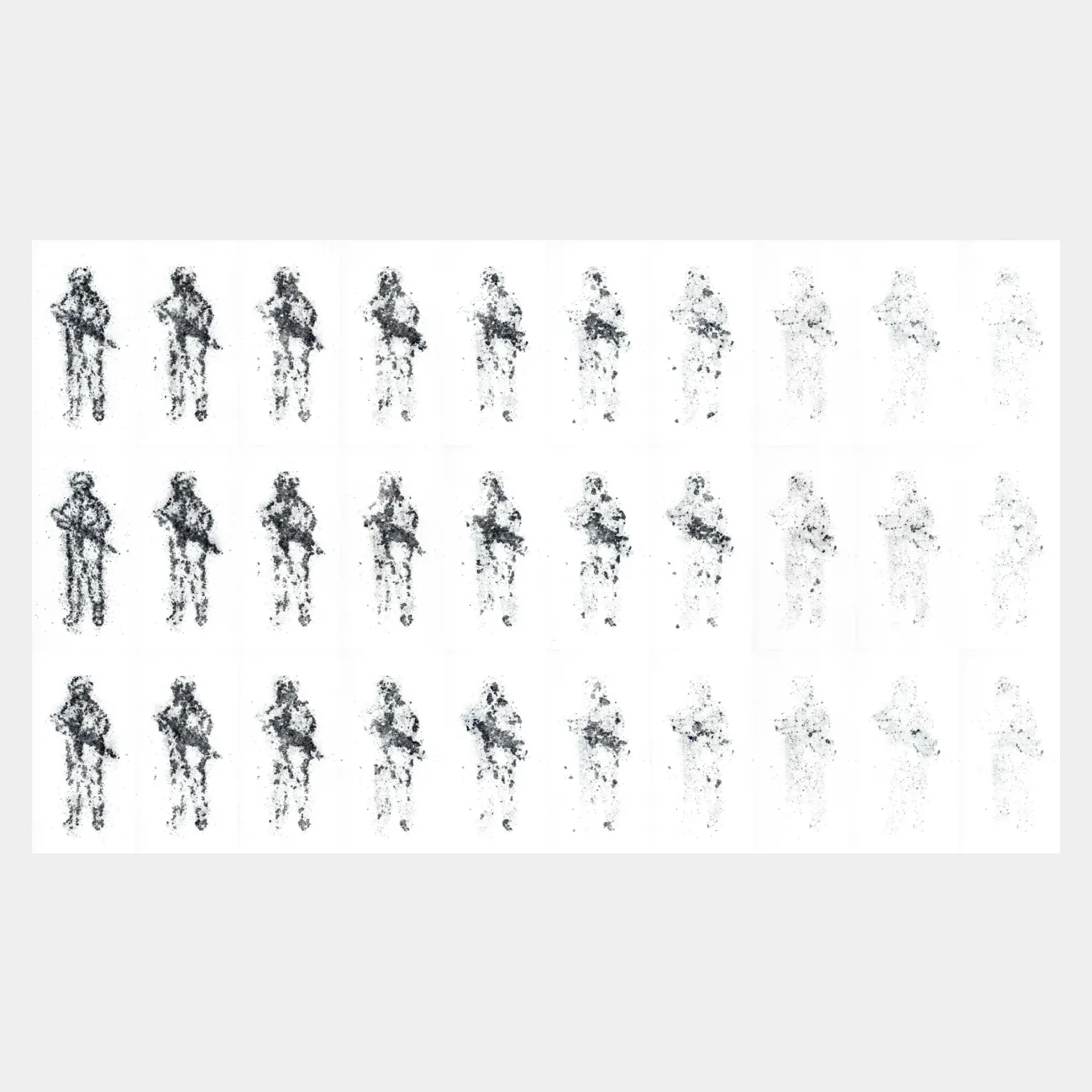Sergei Prokofiev
Sergei Prokofiev creates sculpture, graphic art, video, and light installations. One of the artist’s favorite techniques is a three dimensional linear drawing that unites features of sculpture and graphics. In the early 2010s, he “drew” with fluorescent lamps, producing objects in the spirit of classical minimalist Dan Flavin, before switching to a 3D pen.

Sergei Prokofiev
Prokofiev’s works often make reference to political reality, as, for example, with his early pieces “Block” and “Smart Bomb”, which were a police barrier and a guided aerial bomb made of fluorescent lamps. Both pieces stem from the beginning of the 2010s, a period when many in Russia lost hope in swift democratization. The lamps contain toxic mercury vapor: the artist chose this material intentionally to depict symbols of power and the violence that it exerts.
Prokofiev has continued developing the same theme for over a decade as part of his “Hell” project on the Russia-Ukraine war. The series, which includes objects, graphics, and videos, began with an architectural model made with a 3D pen. It depicted the Donetsk airport destroyed by fighting, a place emblematic of the first phase of the war, during which Russia partially occupied the Donbas region (the airport, which now lies in ruins, bears the name of the Russian and Soviet composer Sergei Prokofiev, the artist’s full namesake).
Prokofiev himself says that art for him is a form of resistance, not only to the outside world, but also against himself. He believes that this resistance is only possible because of a fundamental disagreement — with himself and the existing order of things.